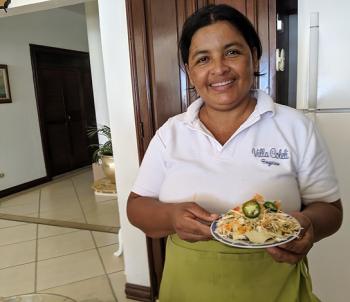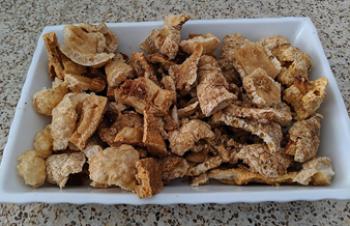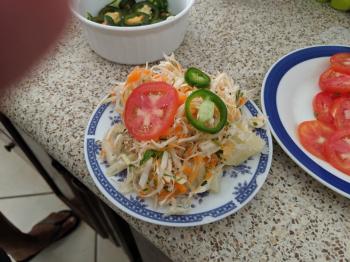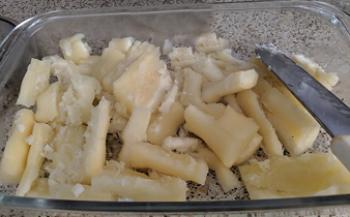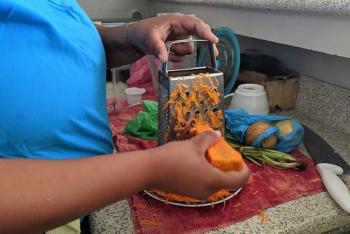What’s Cooking in… Nicaragua
This item appears on page 34 of the June 2020 issue.
Now that my grandkids are older, their parents often gift them a trip for Christmas. When possible, I join them. During the 2019 Christmas holiday, I spent a wonderful two weeks in Pochomil, Nicaragua, a little less than two hours from Managua’s airport, on the Pacific coast.
Our family rented a house on the beach, with an infinity pool, for $250 a night (www.homeaway.com/vacation-rental/p368251). There were eight of us, so it was a great deal. The three air-conditioned bedrooms were a perfect fit for our group.
Even though there was a complete kitchen, at the suggestion of the owner, Edward Cole, we hired the caretaker’s wife, Sara Ayedris, for $20 a day to do the cooking, cleaning and laundry. We bought the groceries, and, at our request, she made traditional Nicaraguan food. It was a great deal.
One of the lunches we enjoyed was vigorón, which is very popular in the Pochomil area. Traditional vigorón calls for banana flowers, the reddish blossom of the banana plant that later becomes the fruit. However, cabbage is often substituted because it has a similar texture and taste.
This was the first recipe I’d heard of that included chicharrones, which we knew as fried pork rinds. The only difference is that when locally made, they often have a little meat on them.
The recipe also called for yuca*, aka cassava, which was another new ingredient for us. The taste and texture are similar to that of potatoes.
Yuca is said to offer numerous health benefits and is often used medicinally. Native Americans are reported to have used yuca for relief from arthritis symptoms, and some studies suggest that it might have the potential to help regulate blood sugar. It has also been used topically to treat skin conditions or wounds and as protection from the sun.
After creating the dish described below, Sarah served the cabbage mixture, pork rinds, yuca, tomatoes and jalapeños in separate bowls so we could build our own vigorón. (I left off the jalapeños.)
I was impressed watching Sara slice the cabbage. Just using a knife, she was able to slice it faster, thinner and neater than any gadget I have ever used.
The salad had a nice, crunchy texture. It was a delightfully refreshing lunch.
*Raw yuca should not be consumed, as it contains trace amounts of cyanide, so be sure to cook it as instructed.
Sandra Scott can be reached by email at sanscott@gmail.com.
Vigorón
1 tbsp salt
2 garlic cloves, sliced
2 pounds of yuca (cassava), peeled and cut into 2-inch pieces
half of a whole cabbage, thinly sliced
1 large carrot, thinly sliced
1 onion, thinly sliced
¼ cup chopped cilantro
½ cup cider vinegar
2 tomatoes, sliced
1 jalapeño pepper, sliced
2 pounds chicharrones
Fill a pot with water, and add the salt and garlic. Heat to boiling, then add the yuca and continue boiling for about 30 minutes or until the yuca is soft. Drain. Break up the yuca into bite-sized pieces, removing any fibrous centers that are present.
In a large bowl, toss the cabbage, carrots, onions and cilantro together. Mix in vinegar and salt to taste.
To assemble, place some yuca on the plate and top it with some chicharrones and some of the cabbage mixture. The tomato and jalapeño slices can be added for a colorful accent.

